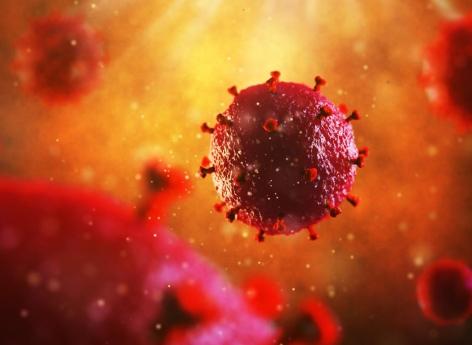THE ESSENTIAL
- After stopping their antiretroviral therapy, some patients’ bodies still control HIV infection.
- These have either a high level of TCD8 lymphocytes or a high level of neutralizing antibodies.
–
In France, in 2016, nearly 172,700 people were living with the human immunodeficiency virus (HIV) and about 6,000 learned of their HIV status, according to National Institute of Health and Medical Research (Inserm).
HIV is the cause of AIDS, a disease also called acquired immunodeficiency syndrome. It is a pathology that destroys the immune defenses of people who are affected. In France, since 2013, these patients have generally been treated with antiretroviral therapy at the time of diagnosis, regardless of the stage of infection. This has several advantages: first, it makes the viral load undetectable in the blood and in genital secretions. It also reduces the risk of severe morbidity and transmission of the virus to a third party. According to a new study published in the journal Nature Medicine, two mechanisms could allow the body to control HIV replication without the help of antiretrovirals.
Lymphocytes TCD8
To reach this conclusion, the authors followed two HIV-positive patients who stopped their antiretroviral treatment. For the first, the duration of this break was three and a half years. Scientists followed him the entire time and eventually observed that his immunity had managed to control the replication of the virus, even without taking antiretrovirals. The reason, according to the researchers, is that this patient had a very high level of TCD8 lymphocytes, which are able to destroy cells infected with HIV.
Antibody
As for the second patient, his body also managed to control the virus without antiretrovirals for almost four years. At the end of this period, it suddenly reappeared due to superinfection, that is, infection with another strain of HIV. Unlike the first, the second patient’s TCD8 lymphocyte count was not elevated. On the other hand, he had antibody highly effective HIV specific neutralizers. These results therefore suggest that, via two distinct mechanisms, the body of some AIDS patients would be able to fight against HIV even after stopping their antiretroviral treatment. Ultimately, this discovery could allow the development of new treatments for HIV-positive people.
Protect yourself above all
Despite all the therapeutic innovations in the management of AIDS disease, we must not stop protecting ourselves. HIV can be transmitted through blood, breast milk, semen and vaginal fluids. When having sex with a new partner, it is therefore essential to put on a male or female condom. A reflex to keep until the two people have taken a blood test proving that they are not seropositive.
Globally, 36.9 million people were living with HIV in 2017. Since the start of the epidemic, this virus has already killed more than 35 million.
–


